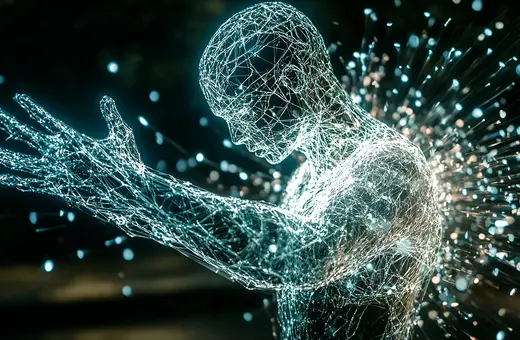The BBC/HBO dramatization of Philip Pullman’s magnum opus His Dark Materials has been one of the televisual highlights of the year, if not the decade. The alternative reality of Lyra Belacqua’s Oxford, with its airships and daemons and gateways to other worlds, is so strange and yet somehow so familiar. The violent dogmatism of the Magisterium mirrors the rising tide of nationalism; the Gyptian children severed from their daemons might serve as a metaphor for the scars of a decade of austerity.
What is perhaps most captivating is how Pullman draws on cutting-edge developments in science to tell his story. At the centre of the His Dark Materials trilogy is the mysterious substance known as ‘Dust'. In developing his theory of Dust – he likes to talk of it as a process of discovery rather than creation – Pullman drew inspiration from dark matter, the equally mysterious substance that is predicted by our best scientific theories but which we have thus far not been able to observe directly. Another source of inspiration was the Higgs Boson – also known as the ‘the God particle’ – the fundamental particle discovered in the Large Hadron Collider in 2012. The Higgs Boson is in fact an excitation, an all-pervasive field known as the Higgs field. And the Higgs field plays a very special role in physics; it gives mass to the particles that make us up. Without the Higgs field, electrons and quarks would be weightless and travel at the speed of light. It is the interaction of these particles with the Higgs field that slows them down and gives them weight.
Pullman draws inspiration from cutting-edge developments in science; in this case, he may have foreshadowed one.
What has this got to do with Dust? As the story develops, we discover that Dust is in fact a kind of fundamental particle: the ‘Rusakov particle’. And, like the Higgs boson, this particle is an excitation in an all-pervasive field: the Rusakov field. Whilst the function of the Higgs field is to give mass to particles, the function of the Rusakov field is to give consciousness to humans. It was when, 30,000 years ago, human beings began to interact with the Rusakov field that the lights of self-awareness switched on and we began to reflect on our own existence.
I’m a huge fan of Pullman’s work, but it was only recently that I discovered connections to my own work on the science of consciousness. Sir Philip and I hooked up on twitter, when he interjected into a philosophical discussion I was having on the nature of consciousness. We subsequently emailed, he read and kindly endorsed my book Galileo’s Error: Foundations for a New Science of Consciousness, and we ended up having a public discussion in Oxford on the philosophy of consciousness (which you can view here or read the transcript here). In preparation for this discussion, I looked back at the His Dark Materials trilogy, and was blown away to discover a line from The Subtle Knife (the middle volume) that perfectly captures a view that has recently been causing waves in consciousness research: panpsychism. We have been discussing how Pullman draws inspiration from cutting-edge developments in science; in this case, he may have foreshadowed one.















Join the conversation